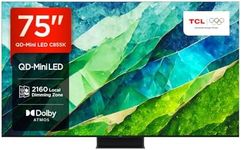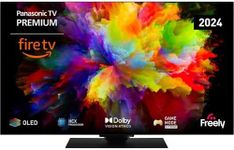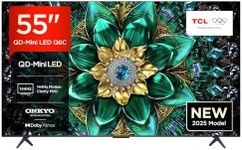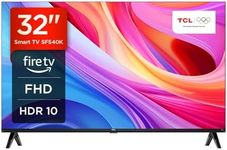Buying Guide for the Best Televisions
Choosing the right television can greatly enhance your viewing experience, whether you're watching movies, sports, or playing video games. To make an informed decision, it's important to understand the key specifications that differentiate various models. By considering your personal needs and preferences, you can find a TV that offers the best fit for you.Screen SizeScreen size refers to the diagonal measurement of the TV screen, usually expressed in inches. This spec is important because it affects how immersive your viewing experience will be. Smaller screens (32-43 inches) are suitable for bedrooms or small living rooms, while medium screens (50-65 inches) are ideal for average-sized living rooms. Larger screens (70 inches and above) are best for home theaters or large living spaces. Consider the size of your room and the distance from which you'll be watching to pick the right screen size.
ResolutionResolution indicates the number of pixels that make up the picture on the screen, with higher resolutions providing sharper and more detailed images. Common resolutions include Full HD (1080p), 4K (2160p), and 8K (4320p). Full HD is sufficient for smaller screens and casual viewing, while 4K is ideal for larger screens and offers a noticeable improvement in picture quality. 8K provides the highest resolution but is more suitable for very large screens and future-proofing. Choose a resolution based on your viewing habits and the type of content you watch.
Display TechnologyDisplay technology refers to the type of screen used in the TV, such as LED, OLED, or QLED. LED TVs are generally more affordable and offer good picture quality. OLED TVs provide deeper blacks and better contrast, making them ideal for movie enthusiasts. QLED TVs offer bright and vibrant colors, suitable for well-lit rooms and dynamic content. Consider the lighting conditions of your room and your preference for picture quality when choosing the display technology.
Smart FeaturesSmart features include built-in internet connectivity and apps that allow you to stream content, browse the web, and use various services directly on your TV. This spec is important for convenience and access to a wide range of entertainment options. Basic smart TVs offer essential apps like Netflix and YouTube, while advanced models provide voice control, smart home integration, and more. Think about how much you value these features and how tech-savvy you are when selecting a TV with smart capabilities.
Refresh RateRefresh rate is the number of times the TV updates the image per second, measured in Hertz (Hz). A higher refresh rate results in smoother motion, which is important for fast-paced content like sports and video games. Standard TVs have a refresh rate of 60Hz, which is adequate for most viewing. TVs with 120Hz or higher refresh rates are better for action-packed scenes and gaming. Consider the type of content you watch most frequently to determine the appropriate refresh rate for your needs.
HDR (High Dynamic Range)HDR enhances the contrast and color range of the TV, providing more realistic and vibrant images. This spec is important for improving the overall picture quality, especially in scenes with bright and dark elements. Basic HDR formats like HDR10 are widely supported, while advanced formats like Dolby Vision offer even better performance. If you enjoy watching high-quality content and want the best visual experience, look for a TV with good HDR capabilities.
ConnectivityConnectivity refers to the ports and wireless options available on the TV, such as HDMI, USB, and Wi-Fi. This spec is important for connecting external devices like gaming consoles, sound systems, and streaming devices. Ensure the TV has enough HDMI ports for your needs, and consider additional features like Bluetooth and Ethernet for more versatile connectivity. Think about the devices you plan to connect and choose a TV that accommodates them.
Audio QualityAudio quality is determined by the TV's built-in speakers and sound technology. This spec is important for an immersive viewing experience, as good audio complements the visual quality. Basic TVs have standard stereo sound, while advanced models offer surround sound and enhanced audio features. If you're an audiophile or enjoy watching movies with rich soundtracks, consider a TV with superior audio quality or plan to invest in external sound systems.















